Spawning Assets¶
All assets can be spawned via polygoniq browser. It also contains search and advanced
filtering options and the whole window can be customized.
Polygoniq Browser¶
Displays filtered assets in square grid view. Asset can be spawned by clicking on asset name.
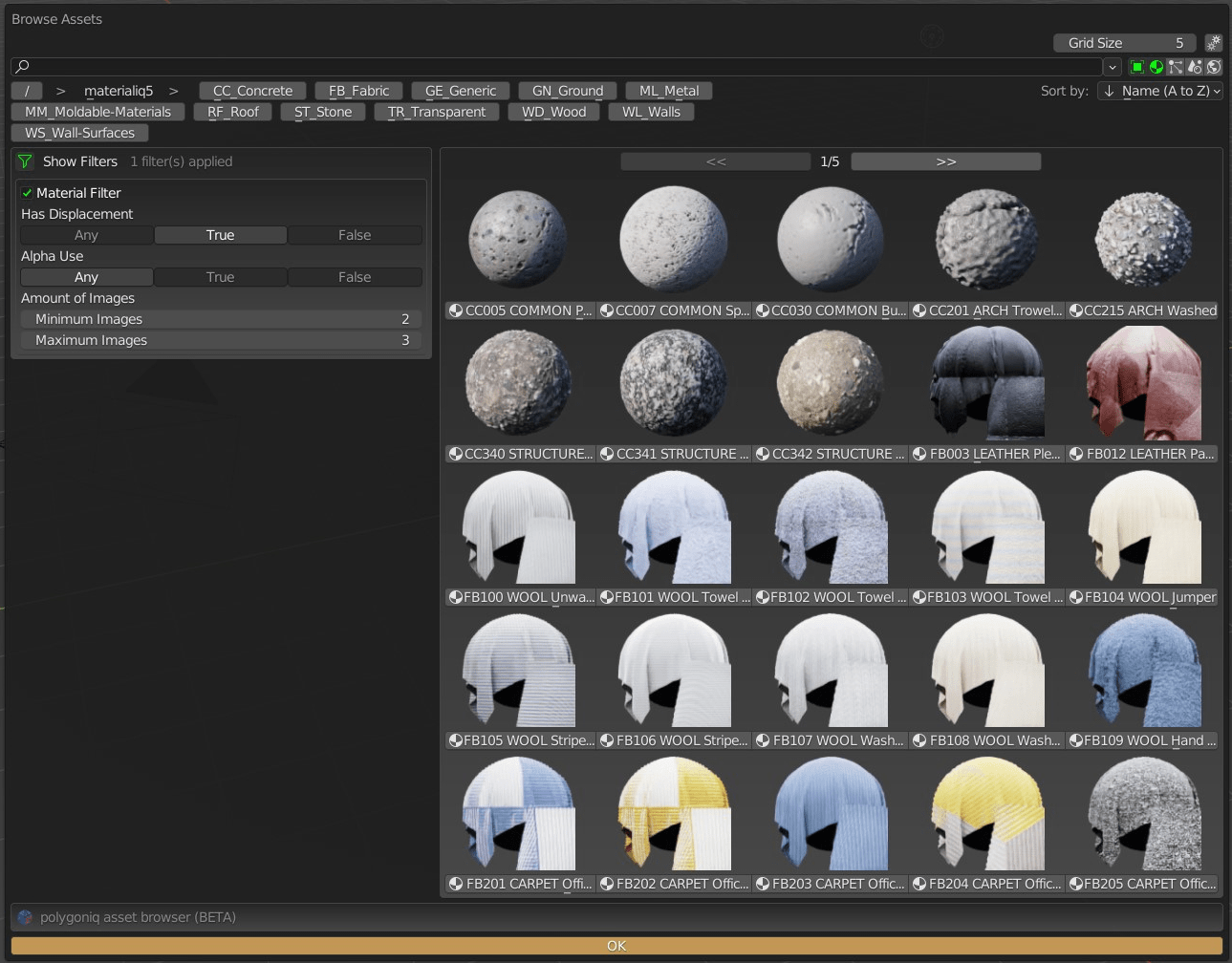
Keyboard shortcut to open browser is Alt+X
Keyboard shortcut can be changed in Preferences -> Keymap -> 3D View -> 3D View (Global) ->
Browse Assets
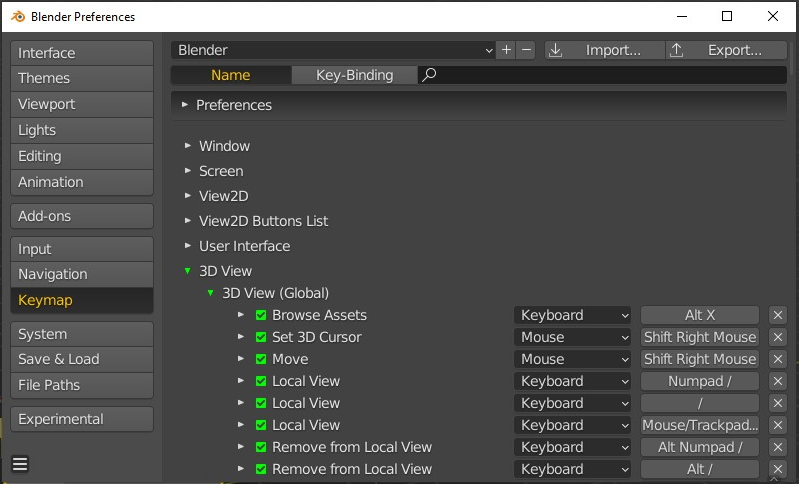
Why not builtin Blender Asset Browser
We were extensively looking into this option but builtin Asset Browser doesn't allow developers to customize spawning and we would need to remove some of our features. Having custom asset browser also allows us to have more powerful asset filtering options.
Clicking on image preview doesn't spawn asset

Search Bar¶
Searches assets by name, category or even string parameters. Browser will show assets that contain all the keywords separated by spaces, commas, dashes or underscores.
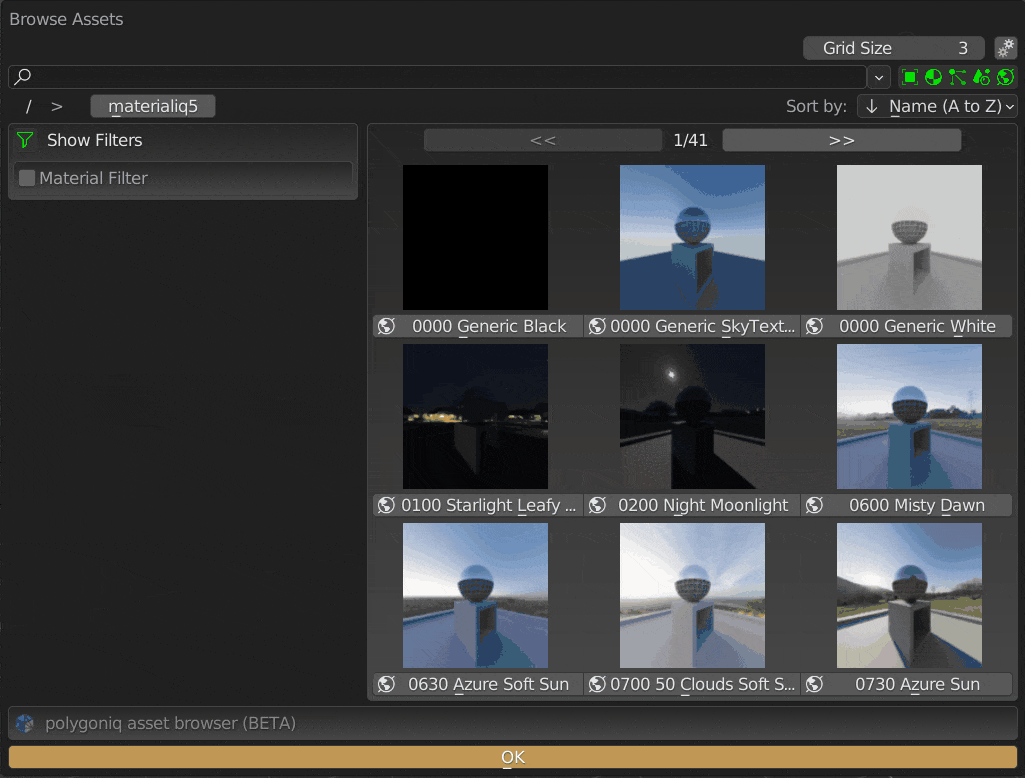
Search history
Return back to your previous search in two clicks.

Category Navigation Buttons¶
Navigates through products and categories.
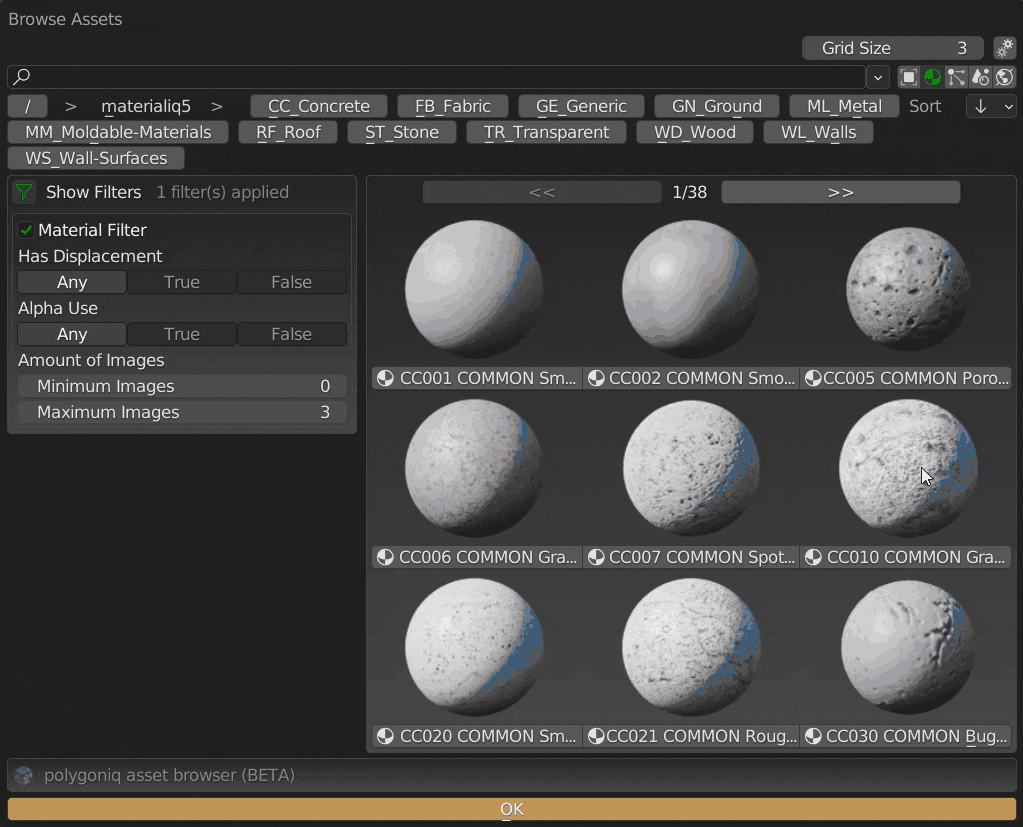
Asset Type Filters¶
Chooses asset types to be displayed, options are objects, materials, particle systems,
scenes and worlds.

Advanced Filters¶
Filters based on more advanced properties, each asset type contains different properties. For example browser can display only materials that contain displacement or objects that are higher than 3 meters.
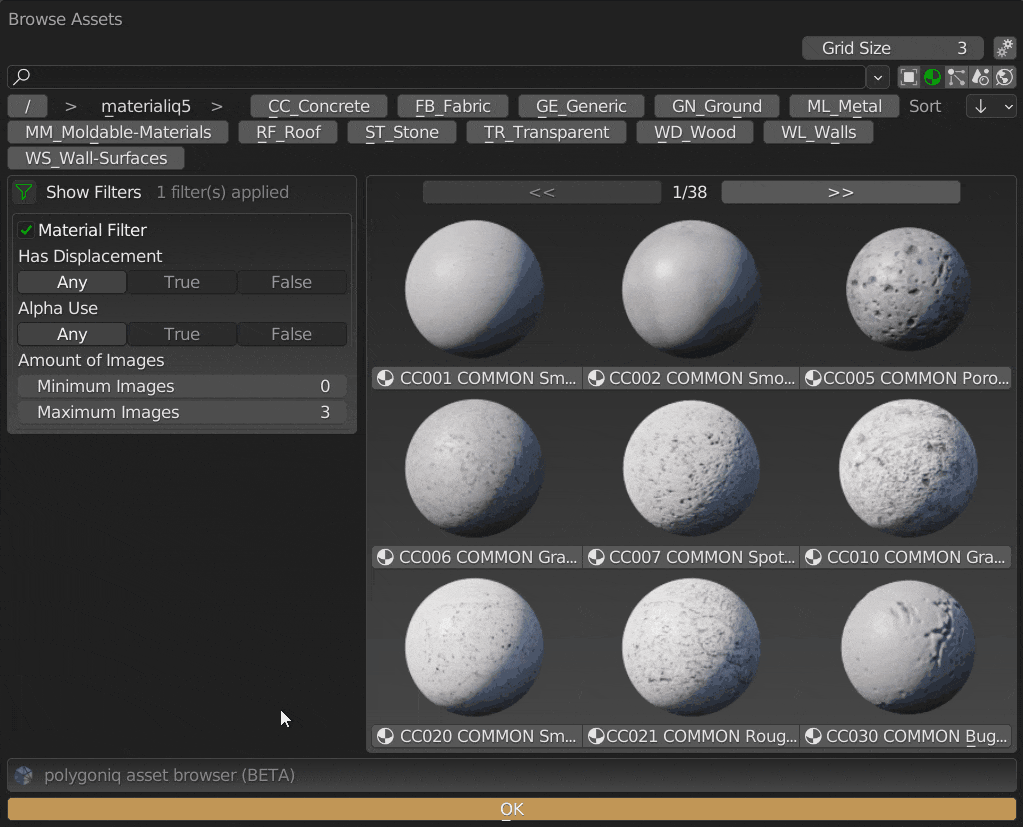
Settings¶
Customizes polygoniq browser window. Settings can be toggled by clicking on button in the
top-right corner. Window Width won't have immediate effect, browser needs to be closed and opened
to reflect the change.

Material Naming¶
All materials have index letters based on their category and a numbers to keep them in order.
The numbers also make it easier to identify materialiq materials in projects with your own
materials so nothing gets mixed up.
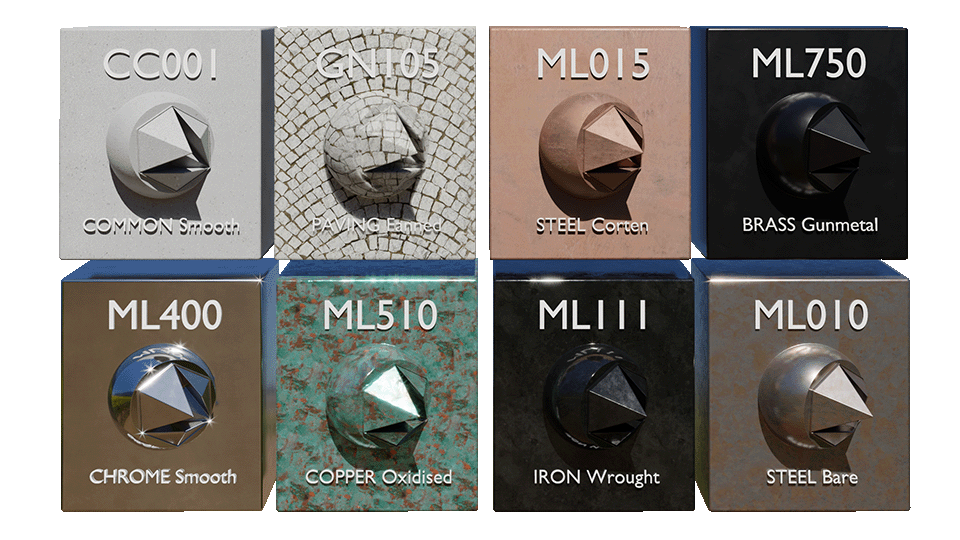
Use material indices to speed up your workflow
It is much faster to find the right material if you remember its index. You just type "WD" when you want a wood material and that gives you a list of all wooden materials. Alternatively if you remember the exact index, let's say "WD010", you can just type that to get "WD010_DECIDUOUS-Oak-Dry-Cracked" material straight away.